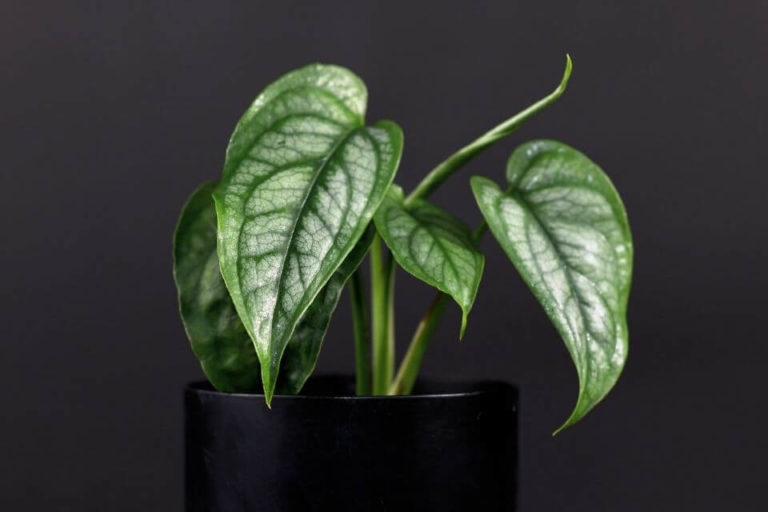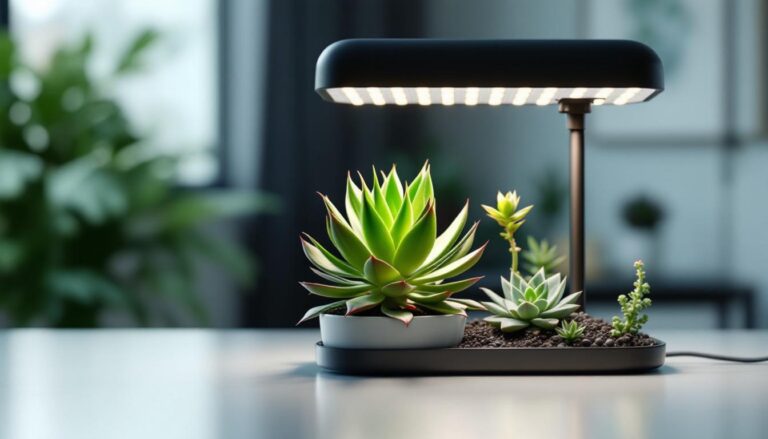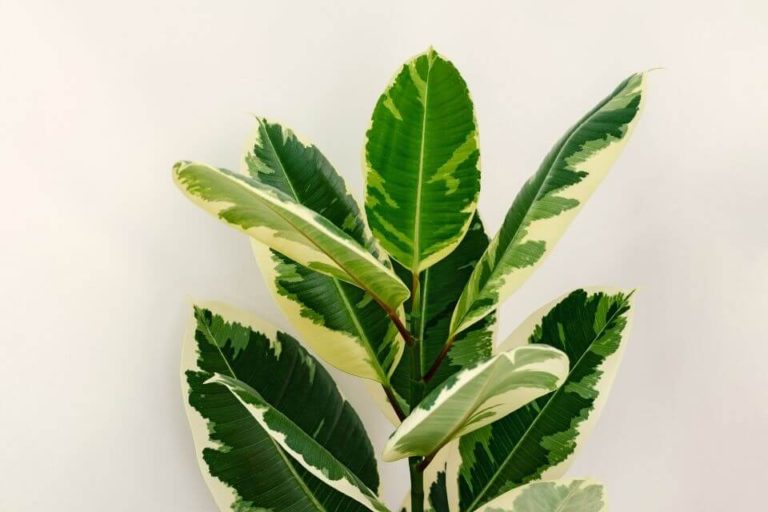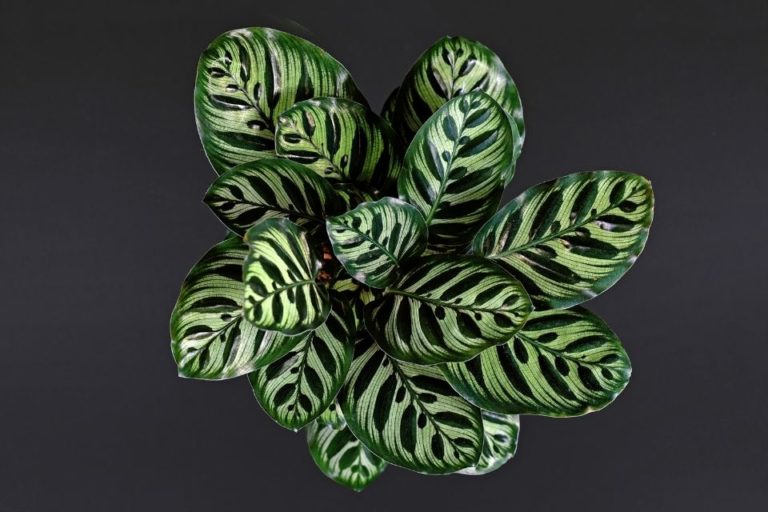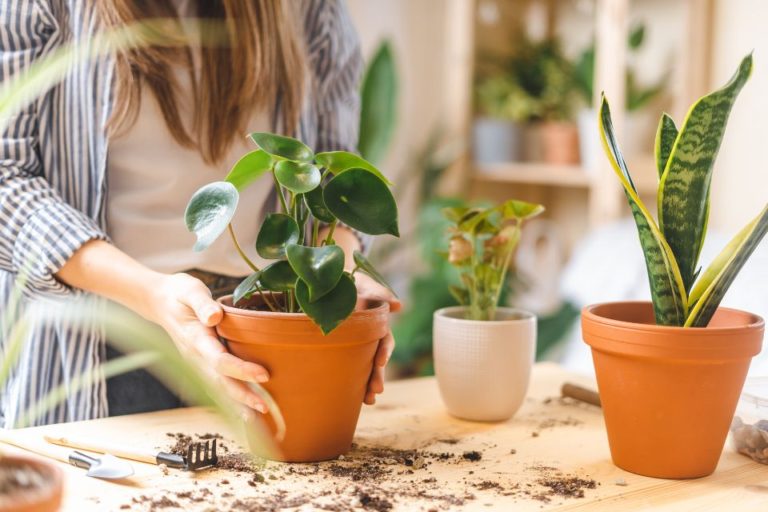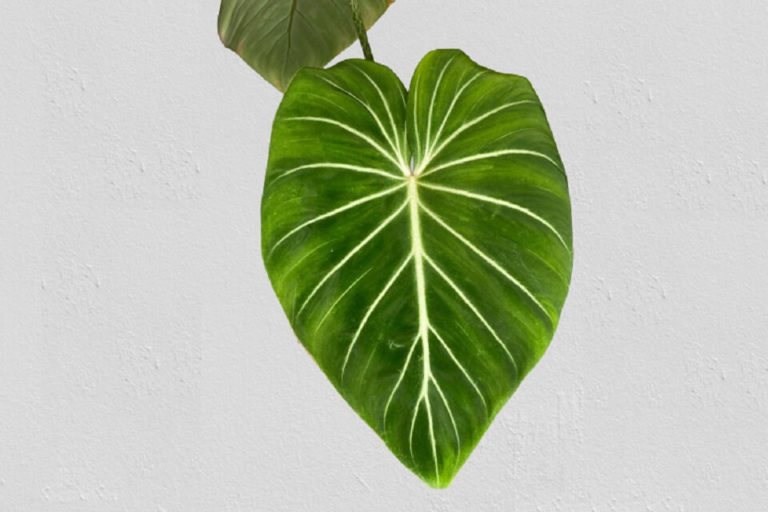Philodendron Birkin Care, Grow & Propagation Guide With RePotting Tips
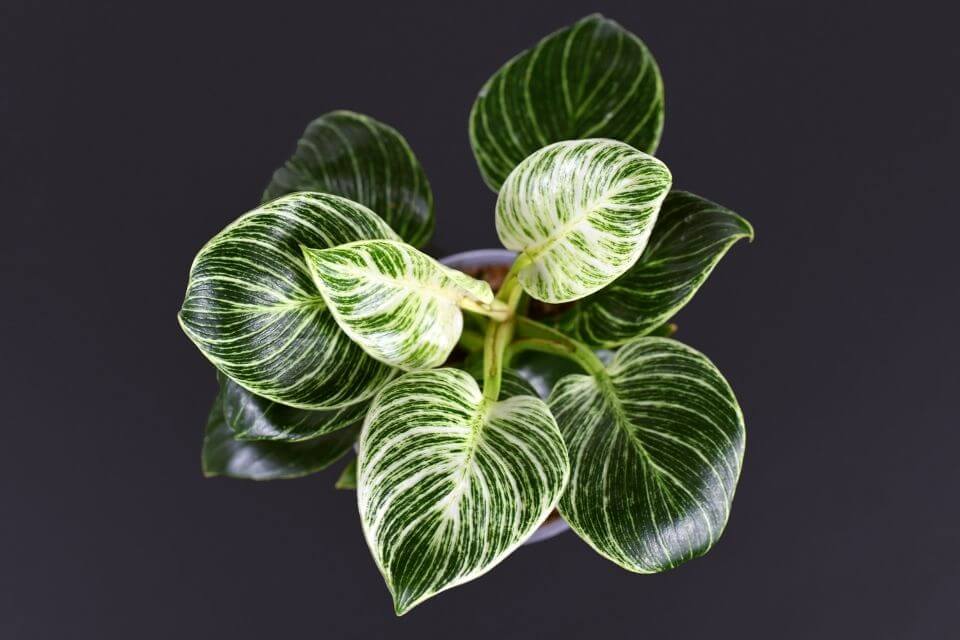
Philodendron Birkin is typically a new cultivator on the modern market that is taking the world by storm. This plant is not only easy to grow indoors but also its spots heart shape and glossy dark leaves make it attractive in any space.
Philodendron Birkin is currently one of the favorite plants to grow because it is easy to care for just like the common household plants such as Monstera and Succulents.
In this guide, we will dive deeper into how to care, grow, and the propagation of the Philodendron Birkin as well as the best way to identify problems with this household plant and much more. Let’s dive in!
| Highlights: | |
|---|---|
| Common Names: | Philodendron Birkin |
| Botanical Name: | Philodendron Birkin |
| Plant Family: | Araceae |
| Plant Type: | Hybrid tropical |
| Origin/Native: | Rainforests of Brazil |
| Care Level: | Easy to care |
| Grow Zone: | 10 (USDA Hardiness Zone) |
| Size: | Up to 36 inches in height and 24 feet spread. The leaf is 7 to 8 inches long and about 5 inches in width. |
| Soil Requirement: | Light and well-draining soil with low pH levels |
| Water Requirement: | Medium moisture levels |
| Sun/Lighting: | Full sun (not direct), but require bright light |
| Temperature Req: | 60°F - 85°F (16 - 30 °C) |
| Propagation: | Stem cutting, propagate in water or soil |
| Toxicity: | Mild toxic to pets and humans |
| Flowering/Color: | No |
| Uses: | House plant for decorative purposes |
TABLE OF CONTENTS
What Is Philodendron Birkin Plant?
The Philodendron Birkin is a rare foliage plant that is originated in South American tropical climates. It is a unique but easy to care household plant with dark green leaves that are streaked with light yellow, where each leaf has a unique pattern.
The plant has lime-green stalks that are thick and dense giving them a distinctive appearance. Philodendron Birkin is so valuable with a strong vitality and can even purify the air.
The Philodendron Birkin plant is suitable for use as a decorative plant that we can keep in our living space.
Philodendron Birkin Size & Appearance
Philodendron Birkin full size plant can be approximately 36 inches tall with about 24 inches wide (spread) at maturity. Sometimes it can overgrow more height can reach more than three feet.
Because this plant is a new cultivator, its height when fully matured is still not well established. Philodendron Birkin features heart-shaped leaves with fine yellowish-white to white pinstripes.
The leaves have a leathery feel with a glossy, dark green shine when Philodendron Birkin mature plant. Interestingly, the Birkin leaves are not the same since the variegation changes from one leaf to another including the color.
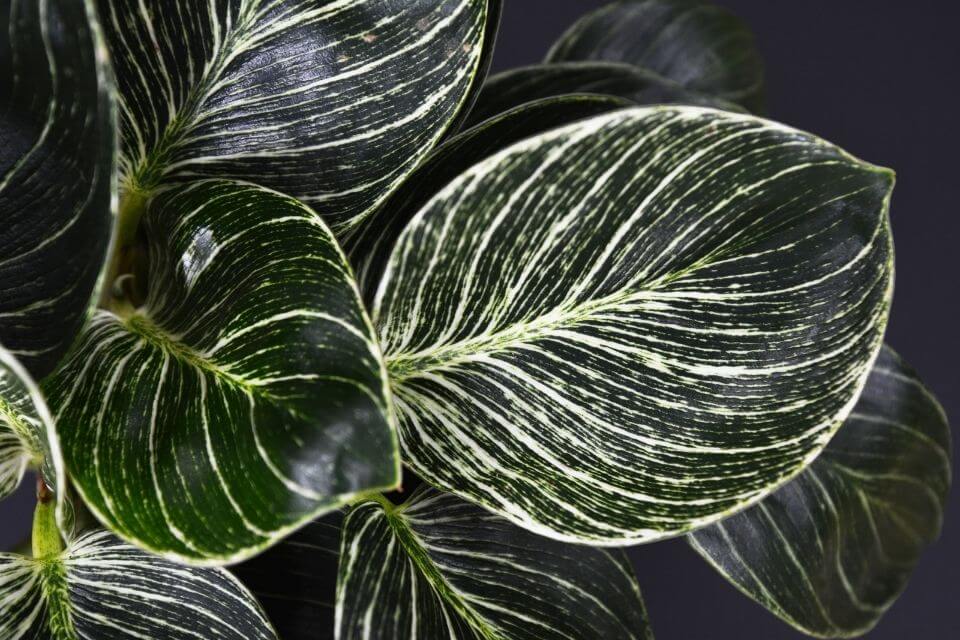
As the plant nears maturity, bright yellowish-white stripes arching from the middle to the edges appear. A mature Philodendron Birkin Birkin plants have eye-catching bright yellow margins.
It will take about 2 years to grow Philodendron Birkin full size.
Uses Of Philodendron Birkin Plant
Philodendron Birkin is mostly an ornamental indoor plant known for its unique glowing white pinstriping down its leaves. It is easy to care for plants making a lovely addition to your house plants collection.
Philodendron Birkin large plant is a perfect indoor plant that keeps the air refreshed thus good if kept in your office or hotel.
Philodendron Birkin Care & Maintenance
When it comes to Philodendron Birkin plant care, you will find it easy when you know the requirements for the plant. The leaves of Philodendron gradually grow into an oval shape.
The tip of the Birkin is slightly pointed and can reach up to 20cm long. The emergence of leaf stripes of the plant is unstable. The slow-growing nature of the Birkin makes it a popular indoor plant because you can choose a nice pot without worrying about repotting for several years.
– Choosing A Right Pot
Choose a Glazed Ceramic Pot, a hanging basket, or plastic pot that is one to two inches larger in diameter than the ideal root ball of your plant. It would be recommended to choose a pot at least 10 inches in diameter with 10 inches deep.
Position the plant such that the top of the root ball is about 0.75 inches below the top of your container to have the perfect space to water your plant without causing water to run over.
– Philodendron Birkin Soil Requirement
Your Birkin requires nutrient-rich soil that retains moisture. Philodendron Birkin soil should retain moisture without becoming soggy or overflooding the plant. When you buy your plant, it will most likely be potted in coco coir or pure peat, but you should not be in a rush to repot your plant.
When it is time to repot your Birkin, the best alternative for a better environment for your Philodendron is a sandy loam rich in humus soil that is well-drained. This means that the soil is:
- Airy: Ensure that the soil is lightened so that it does not get compacted preventing air circulation.
- Well-Drained: The majority of the moisture should drain to the bottom of the pot not to leave your plant too wet.
- Holds Moisture: The soil is not wet but holds the ideal amount of moisture that your Birkin likes.
– Philodendron Birkin Watering Requirement
Philodendron Birkin plant prefers to remain moist, but not wet. This is very crucial because there is a fine margin between moist and root rot. You can achieve the required moisture by watering the plant when the potting mix feels dry about one inch or so down.
Make sure you feel the potting mix first before concluding how wet or dry the Birkin is. This will tell you when it is time to water the plant. It would be incorrect to water your Birkin on a schedule.
You water when the plant indicates that it needs water. By following the rules, you will water your Philodendron a bit at a time and more frequently instead of completely soaking your plant.
– Philodendron Birkin Light Requirements And Exposure
Just like most Philodendrons, the Philodendron Birkin does well under bright to medium, scattered, or rather indirect light. When your Birkin is not getting enough sunlight, it will not be happy and will pull out a very sad-looking growth.
When it receives shaded lighting for long, its leaves will turn yellow. If you find a perfect spot for your plant, Philodendron leaves will have incredible pinstripes, mostly on the new leaves and these pinstripes will gradually change to bright white color.
The best position for your plant is near a window to ensure it gets the ideal light as it grows, but you should place it to direct sunlight to prevent scorched leaves.
– Temperature Requirement
As long as you maintain the temperatures within 55 °F to 86 °F (13 to 30 degrees Celcius), your Philodendron will be perfectly healthy.
Under 55 degrees Fahrenheit, the plant will typically stop growing and if the temperatures are below 50 degrees Fahrenheit, it can suffer from cold and may damage your plant.
Philodendron Birkin is a tropical plant that prefers warm and moist conditions. Therefore, if you live in cold winters, ensure your plant is not in any cold areas like front hallways or drafty windows.
In colder months, make sure you keep your Birkin plant in temperature-controlled environments such as in your living room or in the kitchen.
– Required Philodendron Birkin Humidity Levels
Philodendron Birkin is a tropical plant that likes moist and warm conditions. To keep in the ideal conditions, the humidity levels should be kept between 50 to 75%. If the humidity drops below 50% the Birkin tends to have yellow leaves and dry edges.
To increase the humidity of your Philodendron Birkin:
- Use a humidifier or spray softly around the plant leaves.
- Place the pot on top of a shallow water tray that is filled with pebbles or any other medium. Do not put your pot in water because it can humidialize.
- Pile plants that prefer high humidity together to create a slightly wet zone to maintain the humidity.
– Fertilizing Your Birkin Plant
Fertilizing is a major key to a healthy Philodendron Birkin. Good fertilizing is indicated by large beautiful leaves. Use a balanced liquid fertilizer once per week. The liquid should have magnesium, calcium, and micro-nutrients.
Follow the principle of thin and frequent application with nitrogen being the main fertilizer. Birkin grows slowly at low temperatures and the use of fertilizer may burn the root system. It is advisable to stop fertilizer in winter.
Overfertilization causes its leaf to curl. If the new soil is being used and you have already added the base fertilizer, then there is no need to add extra fertilizer.
– Pruning Requirement
Minimal pruning is required apart from removing the damaged or dead leaves as you feel appropriate. When pruning, you use sharp and sterile pruning shears to minimize the risk of disease.
– Repotting Philodendron Birkin Plant
Philodendron Birkin is a fast-growing plant, meaning it will need to be repotted eventually. It is important to know when to re-pot the Philodendron Birkin plant.
The good thing is that you do not need to re-pot it often like other plants, but you can re-pot it after 2 years. The Birkin outgrows its pot in just a single season meaning you might need to re-pot it yearly.
When ready to re-pot, choose a pot that is about 2 to 3 inches bigger than the current pot. This way, you give your plant enough space to grow, remember do not choose a pot with too much larger.
If you use a larger pot then you are risking your plant by overwatering and it will not absorb this water quickly enough.
Philodendron Birkin Propagation
The Philodendron Birkin propagation involves cutting, sowing, and dividing. The best way is to adopt the cutting and dividing technique for propagating your philodendron Birkin plant at home.
This procedure is relatively simple and cutting propagation is appropriate mostly in early summer.
It is vital to make sure that the cuttings have at least a growth node on them and several roots to maximize the chances of success. Propagate your cuttings in water for about six to eight weeks until there are enough new roots growing.
Then put in the potting mix Alternatively, you can plant the cuttings directly in the soil. This method has a higher success rate but the roots grow more slowly.
You also risk failure when you transfer your water propagated cuttings into the soil. Keep high air humidity and the temperatures should be about 86 degrees Fahrenheit (25° C) and the roots will take about 20 to 25 days.
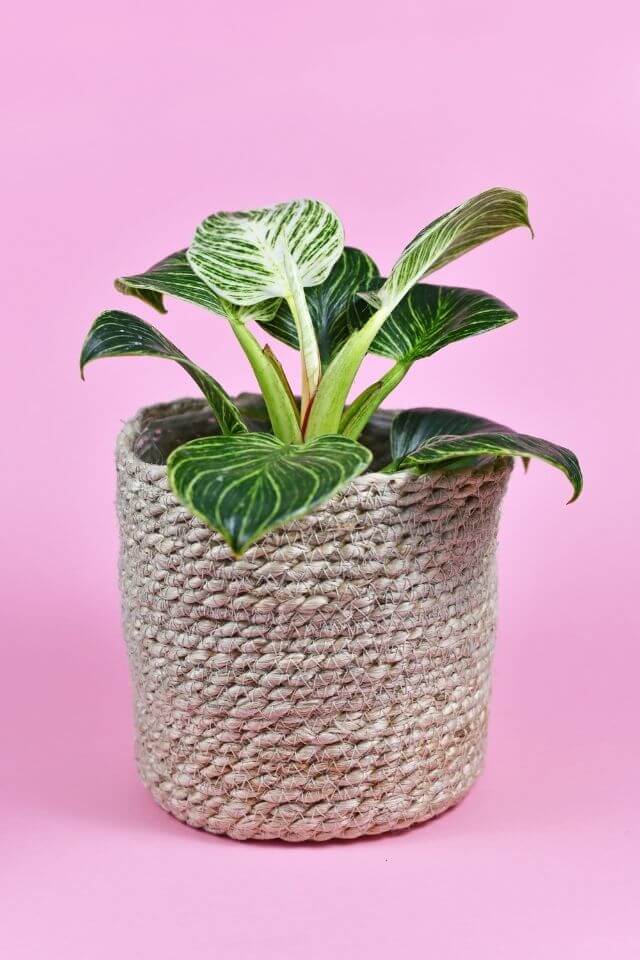
Common Diseases And Problems
The Philodendron Birkin plant is not free of problems just like any other plant in the house. Below are some of the potential problems and a solution to them:
– Discoloration Of The Leaves
If your Birkin plant has yellow leaves, excess water or aging leaves could be the possible causes. For correct diagnosis, ensure the soil moisture level is good and that the drainage holes in the pot are not obscured.
Upon checking and everything is right and the yellow-colored leaf is near the plant’s lower part, it is an aging leaf and should not raise an alarm.
Furthermore, some of the Birkin plant leaves may be brown. When this is observed, more water should be given and a humid environment created.
Additionally, brown spots when seen with yellow halos or probably black tiny spots indicate bacterial effects. This could probably be bacterial blight or bacterial leaf spot.
These bacterial infections could be a result of excessive watering. The moisture level and drainage of the pot should be checked. If the soil turns excessively moist, suspend watering for about a week.
The affected leaves should be clipped off at the node using sanitized Pruning Shears. Ensure that you disinfect the shears amid each cut. This is necessary so as not to spread the bacteria.
The blades should be rubbed with alcohol for easier and faster sanitization.
– Pest Infestation
Philodendron Birkin is comparatively immune to pests. However, scale, spider mites, and mealybugs cause problems. Pest infestation causes leaf discoloration. The pest may be seen on the Birkin plant.
When pests are observed they should be treated with insecticidal soap applied on both sides of the leaves affected. If the infestation is serious, the insecticidal soap should be applied for several days.
It is advisable to check carefully for pests when a new plant is brought home to mitigate pests at home.
– Lighting Problems
Birkin plant responds well to 12 hours of indirect bright light daily. The growth of the Birkin plant is hindered by little light. It is advisable to move the Birkin near the window or increase the grow light cycle.
Too much light is harmful to the Berkin plant. Exposure to excess light causes browning of the leaf’s tip and edges. When this is noticed, move the plant away from the window and minimize the time for the grow light.
Frequently Asked Questions
We have discussed a few common questions you may have when keeping this plant in your space. Take your time to read through and know more about this plant.
Why Do Philodendron Birkin Leaves Curl?
Leaves in a philodendron plant could curl for many reasons. Lack of water, nutritional issues, or temperature stress could all be possible causes. Infestation by pests or bad soil may add up to this problem.
Generally, leaf curling means that the plant is suffering from insufficient growing conditions.
Understanding the reasons for the curling of leaves is paramount to the owner. Leaf curling does not necessarily mean that the leaf will die. It is an indication of an imperfect growing environment and you are obliged to give them what they deserve.
The following factors contribute to leaf curling:
– Water
Water is a necessary condition for plant growth. excessive watering or underwatering can cause problems to Birkin plants. Inadequate water or excess watering can result in wilting or leaf curl.
Additionally, humidity will play a vital role in Birkin’s development. Lack of it will cause the leaves to curl too.
– Nutrition
Getting enough nutrition is adequate for Birkin’s development. The soil is a great determinant and the pH value is of great essence. A nutrition deficiency may occur due to a high pH or damage to the roots which prevents their absorption.
Excess nutrition can be problematic as well. Over-fertilized soil disorients the soil and makes the roots shrink resulting in wilting and curling.
– Temperature
Birkin plants rely on temperature since they are tropical plants and cannot do well in the cold. In extreme cold, they will eventually die.
On the contrary, they will not perform well in high temperatures. Excessive heat in some homes causes them to lose more water resulting in wilting and curling.
– Diseases And Insects
Despite sufficient food and water, Birkin plants are not immune from insect infestations. Thrips and Aphids suck the juicy leaves resulting in curling of the affected leaves. Diseases though curable can have devastating effects.
The most common is powdery mildew, a fungus, that makes the leaves curl upwards leaving a white a white powdery layer behind.
To prevent insects problems you can use soap solution by mixing a few teaspoons of dish liquid soap in one quart of water. Shake well and use a spray can and lightly spray on the affected leaves.
– Sunlight
Exposure to excess sunlight scorches the leaves, makes them curl, or even turn yellow. Limited sunlight makes the leaves droop and stunt them. You have to keep your eye on it and make necessary sunlight exposure.
Why Do Philodendron Plant White Leaves?
Leaf whitening may be attributed to inadequate sunlight. Exposure to little sunshine affects the Birkin growth causing whitening of leaves. Make sure you keep the plant under required sunlight exposure.
Where To Place Philodendron Plant?
Direct sunshine is calamitous to the Birkins. It is undisputed that plants need sunlight to live. Direct sunlight exposure Burn the leaves. The Birkin plant should be placed indoors behind a thin shade in a bright spot.
Alternatively, it should be placed on a windowsill facing east. This is called the grow light and the Birkin grows stronger. Since you use this Birkin plant for decorative purposes, you may move your plant around based on the occasion.
How long Does The Birkin Get?
Birkin species vary in size from modest nestling houseplants on a table in your home to vines that grow 10 feet long with leaves two feet high upon maturity. The most common are 3 ft tall with a spread of 2 ft. However, most Birkins grow 1 ft in width.

How Much Sun Does Philodendron Birkin Need?
Birkin requires indirect sunlight which is average as direct light can burn their leaves. lack of enough light interferes with the right growth and stunts the Birkin with the leaves losing their green color.
They do best in a warm environment of 60°F and suffer temperatures below 50°F.
Is Philodendron Birkin Toxic To Cats And Dogs?
Philodendrons contain Calcium Oxalate that is toxic to both pets and humans. Philodendrons contain Calcium Oxalate that is toxic to both pets and humans.
So this Philodendron Birkin falls under plants that are toxic to cats and dogs as well as humans when ingested. When it is absorbed into the bloodstream and deposited in the organs as streams, it may cause problems.
Intense hypersalivation is experienced by cats and dogs in addition to vomiting due to stomach and throat irritation. It is advisable to call a vet and rinse the pet’s mouth with clean water. It is advisable to place the plant away from reckless pets and children.
Is Philodendron Birkin Rare?
Regarding their beauty, Philodendron Birkin plants are among the rarest indoor houseplants. Houseplant collections are considered incomplete without them. They are common in indoor gardening individuals.
Can I Grow Philodendron Plant In The Green House?
Philodendron species are tropical plants that are perfect to grow in greenhouses. Their maintenance levels are low and do well under indirect sunlight and constantly moist soil.
Do Philodendron Birkins Flower?
Philodendron Birkin plants will not most likely flower indoors but outdoors you will see a white color flower on it but it is very rare. It is a designer plant propagating from stem cutting and derives its beauty from its green leaves barred with the creamy stem.
Where Do I Find Philodendron Birkin For sale?
You can purchase the Philodendron Birkin plant via Etsy.com or eBay.com. Etsy.com is among the best online sites for purchasing houseplants. Some of the top-rated places for the purchase of Philodendron Birkin include:
- Main Line Plants
- Honey Plant Co
- Tropical Plants
- Planttopia
Take Away
The Philodendron Birkin plant is rare and truly beautiful. It is a wonderful houseplant that underscores the importance of house beauty.
Nonetheless, it requires a series of management practices to ensure that it yields the desired characteristics. It is an indoor plant worth sourcing.

